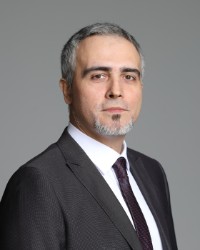Acquisition Finance 2025
Serbia
Trends and Developments
Introduction
Acquisition finance in Serbia has been embedded in the traditional sources and structures of funding, and this trend has mainly been followed in 2024 and 2025 M&A deals. However, recent years have seen interest in raising capital through corporate bonds, a landmark case of the Eurobond issue, and the emergence of management buyouts through specific derivative financial instruments (mainly in the IT industry). Hybrid and complex cross-border financial products as means of acquisition financing still face specific entry barriers imposed dominantly by Serbian FX rules. Serbia has announced its green bonds and ESG agenda, which is expected to have its place in the future structuring of acquisition financing.
Serbian Macroeconomic Environment
Several macroeconomic factors have recently influenced the financing and volume of M&A.
Serbia faced a sharp increase in interest rates on loans from 2022, mainly as a spillover from the European loan markets and the end of an era of cheap money. This is primarily because European banks own the most significant chunk of the Serbian banking sector, and the loans are largely euro-denominated. However, 2024 saw a stabilisation of loan interest rates, allowing for more predictability in M&A financing. Nonetheless, the interest rates remain higher than before 2022, which influenced some Serbian companies to consider sourcing the necessary funds via capital markets, ie, corporate bonds (discussed further in the text).
The inflation tide that struck globally in 2021 did not miss Serbia. Thanks to the decrease in import prices, stabilisation of energy prices, and effective and continuous monetary policies of the National Bank of Serbia (NBS), inflation has been cornered within the trajectories planned by NBS in 2024, and it is expected that such a trend will continue throughout 2025.
Despite the inflation and global economic crisis, the Serbian dinar has been very stable for the last five years and more (in its exchange for the euro). NBS applies a floating exchange rate system that, in combination with the steady inflow of the euro, has proven effective so far.
Serbia demonstrated economic resilience, with GDP growth projected at 4.5% for 2025 and expectations of 4–5% growth for the following two years, according to NBS.
Foreign Direct Investment (FDI) reached unprecedented levels in 2024, with inflows of EUR5.2 billion, representing a 7.9% increase compared to the previous year. These investments are notably diversified, with Serbia attracting more than half of total FDI to the Western Balkans region in recent years. The robust FDI trend underscores Serbia’s acquisition attractiveness and creates a competitive environment for acquisition financing.
In October 2024, Standard & Poor’s upgraded Serbia’s credit rating to investment grade (BBB-) for the first time in the country’s history.
Lastly, the reduction in unemployment rates and growth in labour productivity are likely to continue boosting investor confidence.
Overall, Serbia’s macroeconomic environment is showing signs of recuperation and improvement, paving the way for an increase in the volume of acquisitions and, thus, in acquisition finance.
M&A Market Dynamics
Despite global declines in M&A activity, the Serbian market has seen several notable acquisitions, the most prominent being telco business. Many of these involved foreign investors and multinational corporations seeking to gain a foothold in the region or strengthen their existing positions.
Major telecom and media consolidation in Serbia: PPF Group and Telekom Srbija transform the market
In early 2025, United Group reshaped Serbia’s telecommunications and media landscape in a landmark move, executing two major divestments with a combined enterprise value of EUR1.5 billion. This underscored the region’s appeal to foreign investors and the intensifying competition among domestic players.
PPF Group, through its subsidiary e& PPF Telecom Group, acquired 100% of Serbia Broadband (SBB) from United Group for EUR825 million, marking one of the largest deals in the Western Balkans. This acquisition enabled e& PPF Telecom to integrate SBB’s extensive fixed broadband and pay-TV services with its local mobile operator, Yettel, creating a converged market leader poised for significant growth and enhanced service offerings in Serbia.
In terms of financing, e& PPF publicly stated that the acquisition of SBB was concluded on a cash-free and debt-free basis and that it financed the acquisition purely through raising external debt. It is not publicly known what debt financing structure was employed. External debt financing indicates that owners or affiliates did not provide financing for the deal. Public data from Serbian companies’ registers show no collaterals on the shares or assets of SBB relatable to the subject acquisition, indicating that no leveraged buyout employing the target’s assets was used.
As part of the same strategic transaction, SBB’s direct-to-home satellite operations in Serbia and North Macedonia were carved out and sold to Telekom Srbija, the country’s leading telco operator. Telekom Srbija also acquired Eon TV International Ltd, which operates NetTV Plus, a leading IPTV platform targeting Serbian and ex-Yu diaspora with ethnic content. Coupled with the acquisition of sports broadcasting rights, Telekom Srbija’s acquisition totalled EUR652 million.
Telekom Srbija did not reveal the structure and source of financing for its acquisition of United Group’s portfolio. Considering that Telekom Srbija raised USD900 million worth of Eurobonds in autumn 2024, it is assumed that some of those funds may have been employed in the subject acquisitions. Otherwise, it is possible that Telekom Srbija employed a combination of cash (internal equity) and debt financing via banking loans.
Both companies publicly announced that the respective acquisitions had been closed, indicating no deferred or contingent considerations were involved.
The annual reports and financial statements of both buyers are expected to shed more light on the acquisition finance methods employed.
Flutter Entertainment’s acquisition of MaxBet
Flutter Entertainment, a global sports betting and gaming leader, acquired MaxBet strategically to expand its presence in the regulated Serbian market. With its vast retail betting locations and online platform network, MaxBet is one of Serbia’s largest operators in the gambling sector. Public sources indicated that the acquisition was made for cash, on a debt and cash-free basis, with a further payment to be made if MaxBet exceeds the relevant financial thresholds. At the same time, Flutter has the option to purchase the remaining 49% shareholding in MaxBet in 2029 (thus indicating earnouts and equity rollovers).
Flutter Entertainment did not reveal the source of funding for the acquisition. Flutter’s financial statements show the existence of debt with accrued interest, which might imply debt financing.
Other notable acquisitions
In April 2025, it was announced that BlackPeak Capital made its first investment in Serbia by partnering with Kafeterija, the country’s largest specialty coffee chain, to support its regional expansion and ambition to become the market leader in South-Eastern Europe. Kafeterija’s growth strategy includes expanding its footprint across Bulgaria, Romania and Hungary, aiming for 150 stores and EUR70 million in annual sales. Public data from the Serbian companies’ registry shows that BlackPeak acquired a minority share in Kafeterija, indicating that it provided finance to the target via capital increase. It is not publicly known how BlackPeak financed its acquisition.
Similarly, Integral Capital Group acquired a 50% stake in Walter BBQ, Serbia’s largest independently owned fast-casual restaurant chain, with plans to drive further growth within Serbia and into other Balkan markets. As an investment company managing institutional capital from the likes of EBRD, EIF and IFC, it is likely that the acquisition was funded by investing such capital.
Emergence of Corporate Bonds and the Landmark Case of Eurobond Issuance
Capital markets in Serbia have traditionally not focused on raising capital, and precedence was given to banking finance. The long-term trend was marked by the exit of listed companies from the Belgrade Stock Exchange.
However, recent trends showed interest in raising capital through issuing corporate bonds, ie, debt capital market. This was fuelled by incentives and financing provided by the World Bank (for the development of the corporate bonds market), the legal framework introduced by the Serbian government, and its capital injection to the Belgrade Stock Exchange. In addition, the local companies started realising the benefits of corporate bonds and their positive influence over cash flow statements. It is publicly said there are dozens of companies prepared to embark on corporate bond issues. The likes of Raiffeisen Bank Belgrade, Naftna Industrija Srbije (NIS) (Serbia’s only oil refinery and the leading network of retail gas stations) and Elixir (leading chemical company) were some of the notable examples of the successful issue of corporate bonds in 2024 and 2025. However, none of these companies stated that the funds would be explicitly used for acquisitions (though use for general business purposes might include acquisitions).
Whether corporate bonds will find their place in financing M&A in Serbia is yet to be seen.
In 2024, Telekom Srbija issued its inaugural Eurobond worth USD900 million. This issuance was a key step in the company’s financial strategy, providing additional funding to pursue its strategic acquisitions and expand its business operations locally and regionally. The Eurobond was well-received by investors, marking a significant milestone in Serbia’s corporate debt market. The success of Telekom Srbija’s Eurobond issuance signals possibilities for companies to diversify their funding sources, which reduces dependence on local banks. This transaction also represents a broader trend for Serbia, where companies can increasingly access global capital markets.
Management Buyouts
In 2021, Serbia introduced a specific financial instrument, essentially an option to buy shares in a limited liability company. This is a legal incentive for managers and employees to contribute to the company they manage/work in. In practice, this is aimed at the IT sector, which is a significant contributor to the Serbian economy’s exports.
Recent trends have shown a steady increase in employing this financial instrument.
Hybrid and Complex Forms of Cross-Border Financing
Some foreign investors expressed interest in employing hybrid or complex forms of cross-border financing for acquisition purposes. These include equity kickers, mezzanine and performance-based financing, cashless exercise of warrants, convertible loans, preference shares with specific rights, etc.
The Serbian FX regulatory framework, as interpreted by NBS, is very conservative and frequently does not recognise sophisticated cross-border financial products. The focus of such a regulatory framework is to enable NBS to secure the stability of Serbia’s aggregate payment balance and to react swiftly in case of a significant outflow of cash from Serbia. This is considered a remnant of the times when Serbia faced significant currency and aggregate liquidity challenges back in the 1980s and 1990s.
Real Estate and Infrastructure
It is also worth mentioning that introducing Real Estate Investment Trusts (REITs) in Serbia is expected to impact the financial market significantly and indirectly support acquisition finance. By enabling market-based real estate investment through publicly traded vehicles, REITs will enhance liquidity, attract institutional investors and increase transparency in the property sector. This shift moves Serbia away from traditional, direct ownership models and opens real estate to broader financing structures. In the context of acquisition finance, more liquid and transparent property markets improve asset valuation and may enable the use of REIT-held assets as collateral in M&A transactions. This is particularly relevant for deals involving real estate-heavy sectors such as retail, logistics and hospitality. Additionally, expected tax incentives and increased investor confidence could reduce financing costs and improve deal terms. Over time, REITs may become an essential tool in structuring and financing acquisitions.
ESG as a Strategic Imperative
Serbia has made notable progress in embedding ESG into its legal and financial systems. The government has committed to the United Nations Sustainable Development Goals and ratified the Paris Agreement, aligning its environmental, social and governance policies with international standards. These commitments are reflected in strategic plans and reforms, particularly in energy diversification and decarbonisation.
A key development is Serbia’s Sustainable Finance Framework, which enables the issuance of Green, Social and Sustainable Finance Instruments. While not directly focused on acquisition finance, this framework is highly relevant to the evolving structure of public sector and infrastructure financing, which intersects with acquisition finance regarding transaction structuring, risk allocation and ESG due diligence. From an acquisition finance perspective, the Framework’s emphasis on using proceeds, evaluation and selection, and reporting and verification aligns with standard ESG-linked lending and acquisition structures.
For example, buyers in acquisition transactions involving infrastructure or utilities increasingly rely on green/sustainable financing to fund the purchase of ESG-compliant assets. The Serbian Framework sets precise criteria for eligible expenditures, such as renewable energy, energy efficiency, clean transport, healthcare, education, and pollution control, all sectors with growing M&A activity driven by sustainable investment mandates.
Furthermore, the document creates mechanisms for assigning proceeds to specific projects. It introduces a “virtual register” for tracking the use of funds – tools that mirror escrow and monitoring structures often used in acquisition finance to ensure covenant compliance and use-of-proceeds integrity. This approach enhances transparency and investor confidence, which are critical in green M&A deals, especially when sovereign or quasi-sovereign guarantees are involved.
The Framework also supports the development of social and economic infrastructure, particularly in underserved regions. This opens doors for public-private partnerships (PPPs) or acquisition transactions involving concessionaires or utility providers where green credentials influence capital structure and funding terms. For acquirers or sponsors seeking to invest in Serbia’s healthcare, education, transport or energy sectors, this Framework signals the potential availability of concessional or sustainability-linked sovereign co-financing, thereby reducing the overall cost of capital.
In conclusion, the Sustainable Finance Framework offers a clear regulatory and fiscal roadmap for blending sovereign ESG financing with private sector capital, especially in infrastructure and development-heavy acquisitions. It marks a structural benchmark for future, green-linked transaction planning in Serbia and the broader Western Balkans.
Outlook for 2025 and Beyond
Looking ahead to 2025, Serbia’s acquisition finance landscape is set to continue its upward trajectory. The ongoing M&A activity and an improving macroeconomic environment position Serbia as an increasingly important destination for foreign investments. The country’s financial markets are expected to develop further, providing more opportunities for businesses and investors to access capital for expansion. In addition, Serbia is actively preparing to host EXPO 2027, a significant national project driving a wave of new investments and transactions across multiple sectors. This surge of activity is already attracting international investors and fostering increased co-operation between banks, corporates and public entities. As a result, the lead-up to EXPO 2027 is expected to generate significant acquisition-financed transactions, further accelerating the development of Serbia’s financial and business landscape. Lastly, having in mind Serbia’s ongoing EU integration efforts will likely lead to further alignment or regulations affecting acquisition finance with EU standards, creating a more familiar environment for European investors.




